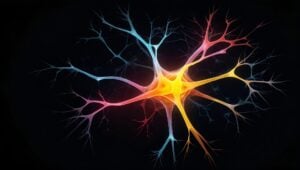Defining Human Insights
In “The Power of Human Insights: Tools and Methods,” UXtweak defines human insight. They write, “In the context of UX design, the term human insight refers to the understanding of the needs, wants, and motivations of one’s audience. It revolves around gathering invaluable information about the way humans interact with a service or a product as well as the intrinsic and extrinsic motivations surrounding this usage.” This is an integral part of the UX design process, UXtweak notes, as it aids the UX designer in using empathy to understand users, and to create meaningful, human-centric design solutions.
Human insight-based methodologies could be used by UX designers, researchers, analysts and marketers to delve into human behavior and understand their interactions. It is a solid start for product and feature development. Moderated user interviews, focus groups, user surveys, diary studies, usability testing and card sorting can be leveraged to gain that deeper human understanding.
But UXtweak goes a bit further in differentiating between consumer, user and human insights:
- Consumer Insights: A general understanding of consumer behavior when it comes to their preferences as well as market trends. This could include market research and consumer surveys. A general example: Analyzing consumer trends before launching a new product to the market.
- User Insights: Specific insights that revolve around a real user and their interaction with a digital product or service. Methodologies might entail usability testing, website or app analytics. An example might pertain to product strategy or design, such as conducting usability testing studies to smooth out the user experience before the launch of a digital product.
- Human Insights: A rounded understanding of human behavior including extrinsic and intrinsic motivations, wants, and needs, which can influence product usage. This could involve a broad range of both qualitative and quantitative research methods that allow for a holistic understanding of human behavior. Areas of use include business strategy, product development, UX design, branding, and marketing. An example might be to engage in diary studies and in-depth user interviews to get a better understanding of a particular aspect of human behavior.
Navigating the Customer Journey
A related post on All Things Insights is, “Putting Customer Journey Mapping into Perspective.” Customer journey mapping is a critical task in today’s insights environment. We know that discovering who your target audience is should be key to market research, marketing, and product development missions. This may entail creating customer personas so that you can research your customers in an in-depth way, finding out their shopping and purchasing preferences, so that the company can enhance the customer experience. Customer journey mapping is important for finding out more about the company’s customer base, their brand determinations, and their shopping experiences.
Looking forward to TMRE 2024? The conference, which will be held October 8 to 10, will feature the session, “How Human Truth Builds Better Brands – And Might Just Save The World!,” presented by Chris Hoel, Director of Research, Brandtrust Inc. What if I told you the world is a story you tell yourself, based on experiences and emotions you’ve had in the past? Come hear the completely unbelievable and totally true story of what shapes our experience of reality – and why brands and insights teams can’t afford to ignore it. In an age of AI everything, if we don’t take the time to understand people’s deeper beliefs and motivations for decision-making, we miss the chance to build connections that lead to irrational preference, enduring loyalty, and – just maybe – the key to bridging some of our most vexing societal divides. Learn about mind-blowing, science-backed theories of human meaning that have direct impact on how brands can conduct better research and develop more effective strategies. See examples of what happens when brands get deep human insight right – as well as the risks of getting it wrong. Understand the importance of complementing (or even correcting) AI tools with deep human insight. Register for TMRE 2024 here.
Focused on the Human Experience
Human insights are fundamental to UX design because they help designers create products and experiences that are truly user-centric. We asked Gemini to assess the benefits:
Understanding User Needs and Pain Points:
- Empathy: By incorporating human insights, designers can step into the user’s shoes and understand their needs, frustrations, and motivations. This empathy allows them to design solutions that address real user problems.
- Identifying Pain Points: Through research methods like user interviews and usability testing, designers can uncover pain points and areas of confusion within an existing product. These insights become the foundation for improvements and a smoother user experience.
Designing for Usability and Accessibility:
- Cognitive Abilities: Human insights about human cognition, like memory limitations and attention spans, inform interface design. This ensures the user interface is clear, intuitive, and minimizes cognitive load.
- Accessibility: Understanding user limitations, such as visual impairments or motor disabilities, allows designers to create inclusive experiences that cater to a diverse range of users.
Enhancing User Engagement and Satisfaction:
- Emotional Design: Human insights can guide how emotions are evoked through design elements. Understanding user emotions allows designers to create a positive and engaging experience.
- Building Trust: By factoring in user expectations and behaviors, designers can build trust and familiarity with the product. This leads to higher user satisfaction and loyalty.
Integrating AI into Human Insights
Human insights are the bridge between the technical aspects of design and the real-world needs of users. By incorporating these insights, UX designers can create products that are not only functional but also enjoyable and user-friendly. Human insight remains an integral part of this market research, and of UX design and creating optimal user experiences. But it also remains key in business processes such as product development and strategy, marketing and design.
The advancements in AI, while seemingly contrasting to the human experience, may also signal new ground for deriving and enhancing human insights. Understanding human behavior, and how we gather, human insights may be on the forefront of transformation with such aspects as automated data collection, predictive analytics, natural language processing and biometric research, notes UXtweak.
Video courtesy of UX Akron
Contributor
-

Matthew Kramer is the Digital Editor for All Things Insights & All Things Innovation. He has over 20 years of experience working in publishing and media companies, on a variety of business-to-business publications, websites and trade shows.
View all posts

























































































































































